<div id="2d1e31ad-3ef7-4e5e-8c61-970791f89895" edition="us" editorsday="1" editorsmonth="01" editorsyear="2024" editorsdate="2024-01-01T20:24:26.885Z" innovationday="1" innovationmonth="01" innovationyear="2024" innovationdate="2024-01-01T20:24:26.885Z" techobjectinfo="{}" usepricing="true" data-key="reviewcard__2d1e31ad-3ef7-4e5e-8c61-970791f89895" position="NaN" embeddedimages="[{"id":"6ddb8e79-1290-45a3-a3bf-59c156bc7360","filename":"mill.jpg","dateCreated":{"date":"2023/01/25"},"alt":"mill kitchen bin with food scraps inside","credits":"Mill","caption":"
The Mill kitchen bin system hopes to make more out of your kitchen scraps than just compost.
","width":"6000","height":"4499"},{"id":"1a7f7e43-aeb8-4f52-bc9e-af2451826faa","filename":"screenshot-2024-01-26-at-2-08-46pm.png","dateCreated":{"date":"2024/01/26"},"alt":"mill dirt in box","credits":"David Watsky/CNET","caption":"
Mill’s kitchen bin turns food scraps into the base for chicken feed. While the feed is not currently being produced with the material, Mill has won a few favorable decisions and recommendations from the FDA and opther governing bodies.
","width":"2116","height":"1458"},{"id":"85303708-ed21-4589-bb24-0e2eeab85e39","filename":"lomi-promo-banana-site.jpg","dateCreated":{"date":"2022/02/25"},"alt":"The Lomi composter about to eat a banana peel","credits":"Justin Tech/CNET","caption":"
Buying a Mill bin outright ($1,000) will cost you double that of a Lomi machine.
","width":"3840","height":"2160"},{"id":"7b6be8a9-b21e-4ed5-9e4e-952e2439cd3b","filename":"img-5012.jpg","dateCreated":{"date":"2024/01/26"},"alt":"a pile of food scraps next to a pile of processed dirt","credits":"David Watsky/CNET","caption":"
Food scraps versus what the Mill bin turns them into during one six-hour cycle.
","width":"4032","height":"3024"},{"id":"b16d99c1-59b8-4fb9-8914-c07985995518","filename":"screenshot-2024-01-26-at-2-19-50pm.png","dateCreated":{"date":"2024/01/26"},"alt":"chicken bones in mill bin","credits":"David Watsky/CNET","caption":"
I was pleasantly surprised to find that the Mill bin had pulverized these chicken bones in one grind-and-dry cycle.
","width":"1596","height":"1186"},{"id":"a7a6b2bc-16f2-4cab-aeac-1088208c7bd5","filename":"img-5028.jpg","dateCreated":{"date":"2024/01/26"},"alt":"dog next to box on stoop","credits":"David Watsky/CNET","caption":"
My scheduled pickup didn’t happen, but I was able to get the box into the hands of a USPS driver the next day.
","width":"4032","height":"3024"},{"id":"25a700b5-1cc7-4b94-ab81-b66b1a94ecc1","filename":"gettyimages-1184156438.jpg","dateCreated":{"date":"2020/04/21"},"alt":"A plant and its roots cupped in the palm of an open hand","credits":"Peter Cade/Getty Images","caption":"
Mill material isn’t a replacement for soil or fertilizer.
","width":"5040","height":"3360"},{"id":"d7c43af2-f0ed-442f-9e47-c47a96d7170d","filename":"mill-inthekitchen-inuse8.jpg","dateCreated":{"date":"2023/01/25"},"alt":"food being dumped into mill bin","credits":"Mill","caption":"
The Mill bin looks nice and works extremely well.
","width":"6000","height":"4500"},{"id":"31d80b07-3161-44f7-9ec3-74f8b56d6653","filename":"gettyimages-1219389664.jpg","dateCreated":{"date":"2022/08/22"},"alt":"Hands holding dirt and red wriggler worms.","credits":"Getty Images","caption":"
Worm composting is another way to speed up the process of making fertilizer for your garden and house plants.
","width":"5760","height":"3840"},{"id":"00970628-267c-4f56-ab10-e9d57b5afad8","filename":"lomi-gif.gif","dateCreated":{"date":"2022/02/25"},"alt":"lomi soil being handled","credits":"Justin Tech/CNET","caption":"
Lomi’s grow mode produces a material similar to Mill’s but without the high subscription cost.
","width":"600","height":"338"},{"id":"f6948142-8cf1-4404-85be-8e15c9fb7e22","filename":"factory-farming.jpg","dateCreated":{"date":"2020/04/21"},"alt":"factory farm","credits":"Getty Images","caption":"
With its closed-loop food scrap recycling system, Mill takes aim at both food waste and excessive factory farming for animal feed.
","width":"670","height":"377"}]” imagecredit imagecaption=”” contenttype=”Review” getlisticleindex=”function () { [native code] }” filtershortcodetypes totalfilteritems=”0″ pagelayout=”Review – Article Page” primarytopicslug=”cnet-home” tagslugs tocheadlineitem=”[object Object]” topics=”[object Object],[object Object]”>
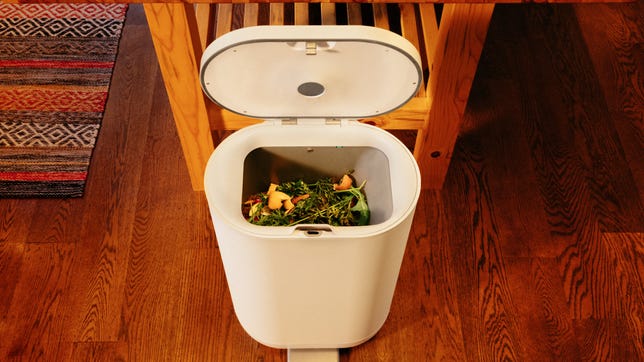
8.2
Mill kitchen bin
No matter how vigilant we are against food waste, unless we’re composting regularly — be it by choice or municipal mandate — we’re sending to landfills untold amounts of organic waste that could be used elsewhere. But even composting may not be the most environmentally sound way to deal with spoiled produce, cast-off fish skin and leftover chicken marsala.
And it’s definitely not a composter.
The Mill bin doesn’t make compost — and the company’s proud of that
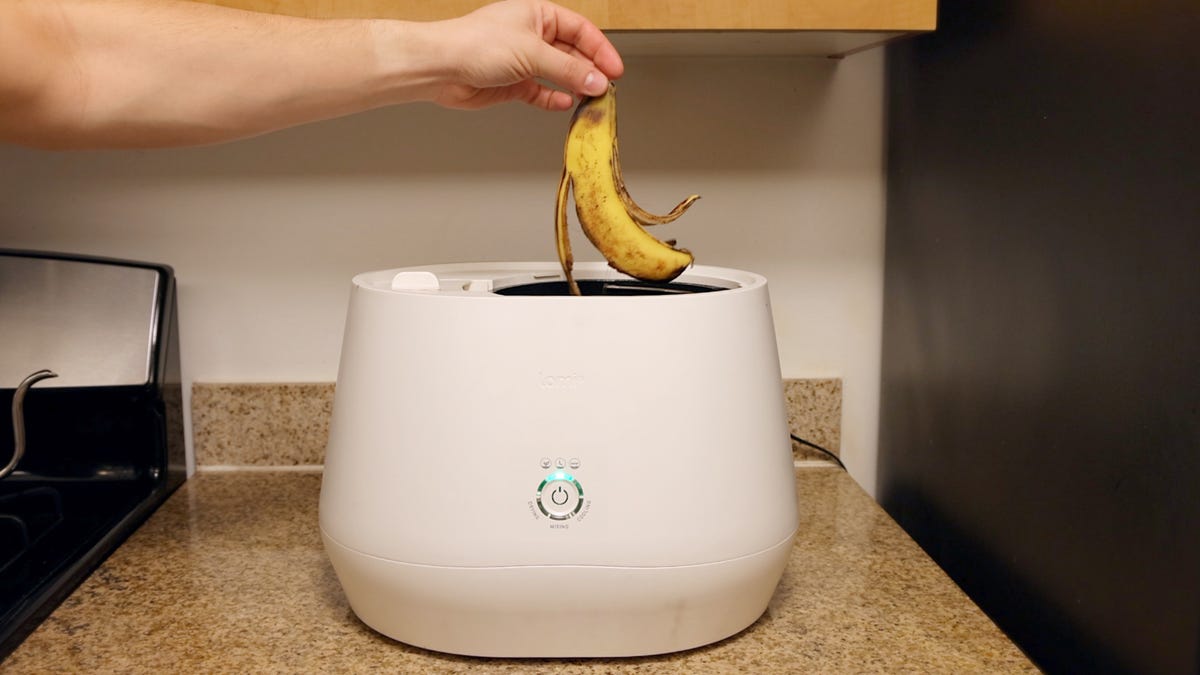
Buying a Mill bin outright ($1,000) will cost you double that of a Lomi machine.
The Mill subscription costs $33 a month, or $396 per year, a recurring fee that includes free pickup of processed scraps and the use of the smart kitchen bin (with the subscription you don’t own the bin). The subscription also gets you free filter replacements (needed about every 60 days) and servicing, should anything go wrong. That cost is about the same as the price of a curbside composting program, and most of those don’t include a smart bin.
Mill just launched a nonsubscription model too, but it’s a budget-buster. The machine costs a whopping $1,000 to buy outright and includes a year of filters but doesn’t include material pickup.
How the Mill setup works: What you can and can’t process
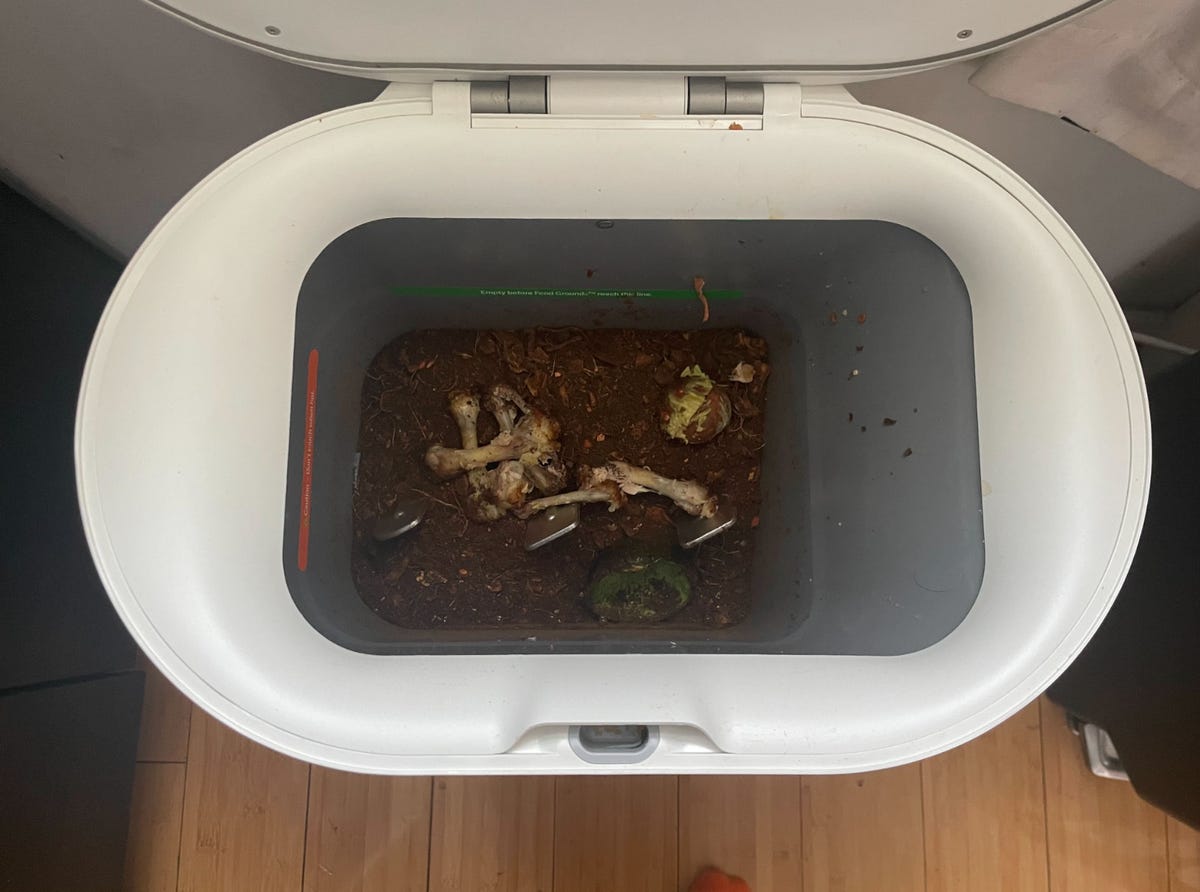
I was pleasantly surprised to find that the Mill bin had pulverized these chicken bones in one grind-and-dry cycle.
But still, the Mill handled more types of waste than I thought it would. The gears easily gobbled up large, dense avocado pits and took care of cooked chicken carcasses. It handled all the coffee grounds I threw in it and pulverized produce seeds and peels.
The Mill bin starts grinding and dehydrating food at whatever time you tell it to via the mobile app. It takes about six hours to complete a cycle, so right before bed made the most sense for me. After a few audible and dog-startling grunts, the Mill eases into action and emits only a soft whirr for the remainder of the cycle.
In the morning, like magic, gnarly food scraps have been transformed into something that looks a lot like rich soil or compost. I disposed of shellfish, salmon skin, moldy bread and other classically smelly things in my Mill and never once awoke to an unpleasant odor.
The handy app tells you when it’s time to empty the contents of the Mill into a prepaid shipping box and schedule a pickup. It’s not hard to judge this on your own, though, in case you don’t want another mobile app telling you what to do.
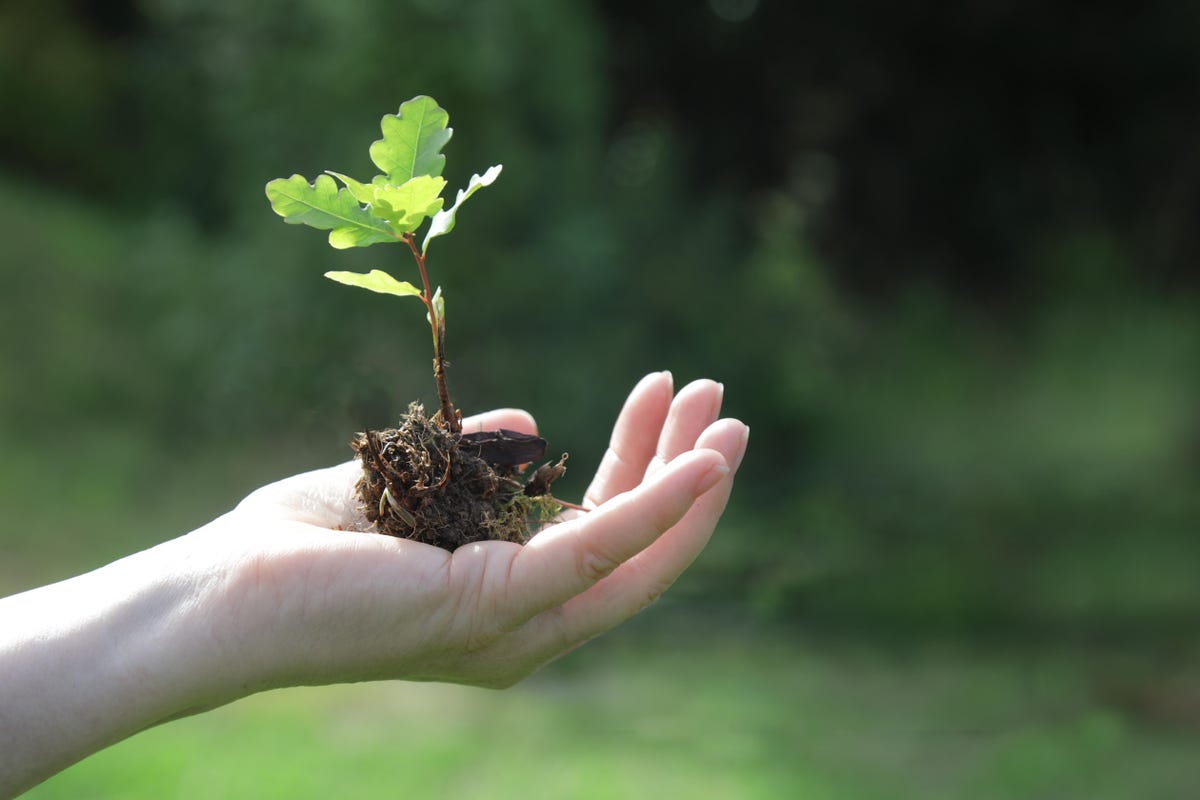
Mill material isn’t a replacement for soil or fertilizer.
To test the processed food’s viability, I mixed some with planting soil, roughly half and half, and tried to rehouse an aloe plant. It died within a few days. As a reminder, Mill doesn’t claim the output is fit for nourishing plants. I was just hopeful, I guess.
On that subject, I spoke with someone about what can be done with Mill material if you choose not to send it back. Sally Brown is a research professor at the School of Environmental and Forest Sciences at the University of Washington and a self-proclaimed soil nerd. She told me that though dirt alone can’t support plants, it can be mixed with mature soil in your yard or garden, where it’ll continue to compost on its own and eventually deliver nutrients to the surrounding flora. Using a ratio of 1-to-10 (Mill dirt to soil) is recommended.
Mill material can also be safely scattered or diffused in most outdoor areas. Just don’t expect a bounty of wildflowers to spring up.
The Mill system is great… if you can afford it
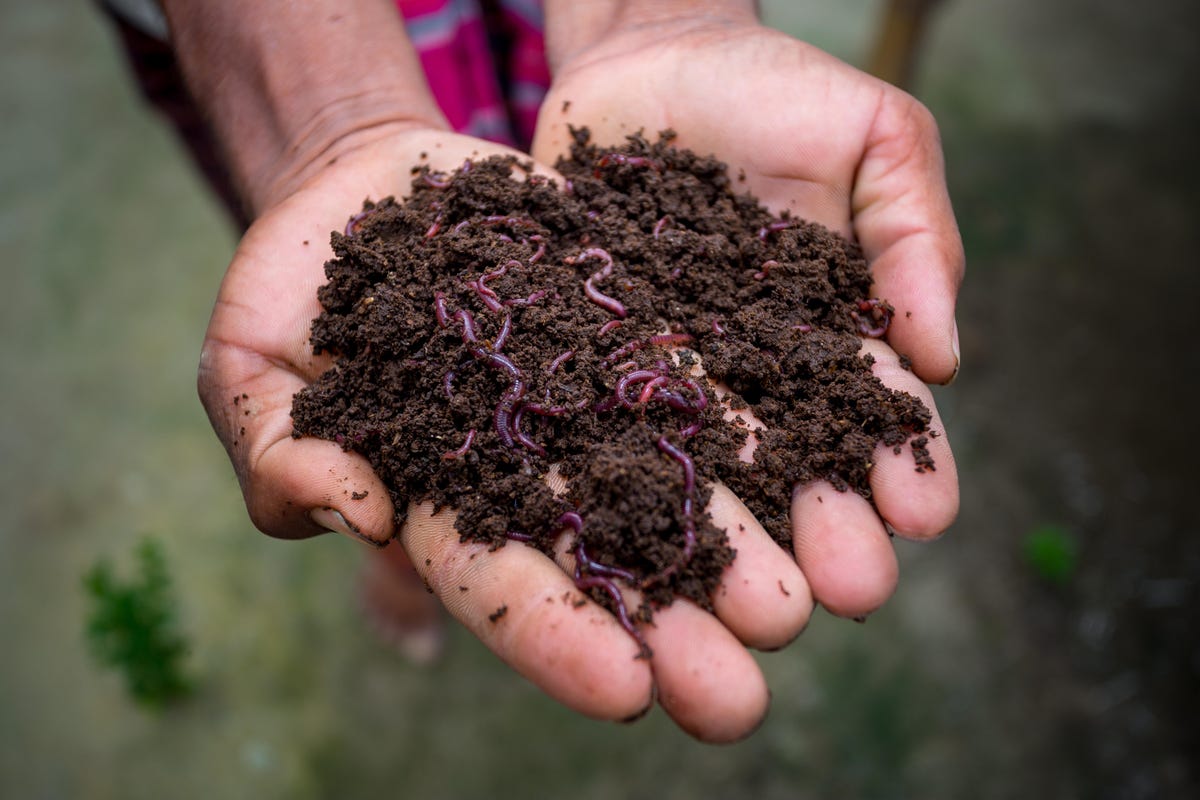
Worm composting is another way to speed up the process of making fertilizer for your garden and house plants.
The cheapest fix for food waste is classic at-home composting, but it’s tricky to do and takes dedication and commitment. It’s also an odorous affair, particularly if you live in tight quarters or up several flights of stairs and can’t get the food waste outside immediately. Freezing food scraps until you can transport them to an outdoor pile helps. Here’s our guide to starting a compost pile and our step-by-step explainer on how to build a (surprisingly not gross) worm farm for composting.
Other curbside compost services
Other private compost pickup services exist, but most don’t include a smart bin. They’ll retrieve your kitchen waste every week to be reused or recycled in other ways. They typically cost anywhere from $25 to $40 a month, depending on where you live.
Cheaper smart kitchen bins and countertop composters
Lomi’s grow mode produces a material similar to Mill’s but without the high subscription cost.
All three of Mill’s competitors offer countertop models that are hundreds of dollars cheaper. The Lomi by Pela, which we tested in 2022, is $500 for the machine but can be had for as little as $300 on sale. Vitamix’s FoodCycler, one that we’re currently testing, starts at $400 for the base FC-50 model. The Lomi and FoodCycler also have recurring costs in the form of pads and filters. For Lomi, they’ll run you about $9 per month.
Reencle, which makes the boldest claims about turning food scraps into nutrient-rich fertilizer, using microbes that emulate the human digestive system, sells a composter that starts at $500. Brown said you can’t really make true compost that quickly, which is why she’s actively endorsed Mill. We’re also planning to test this model to see for ourselves.

